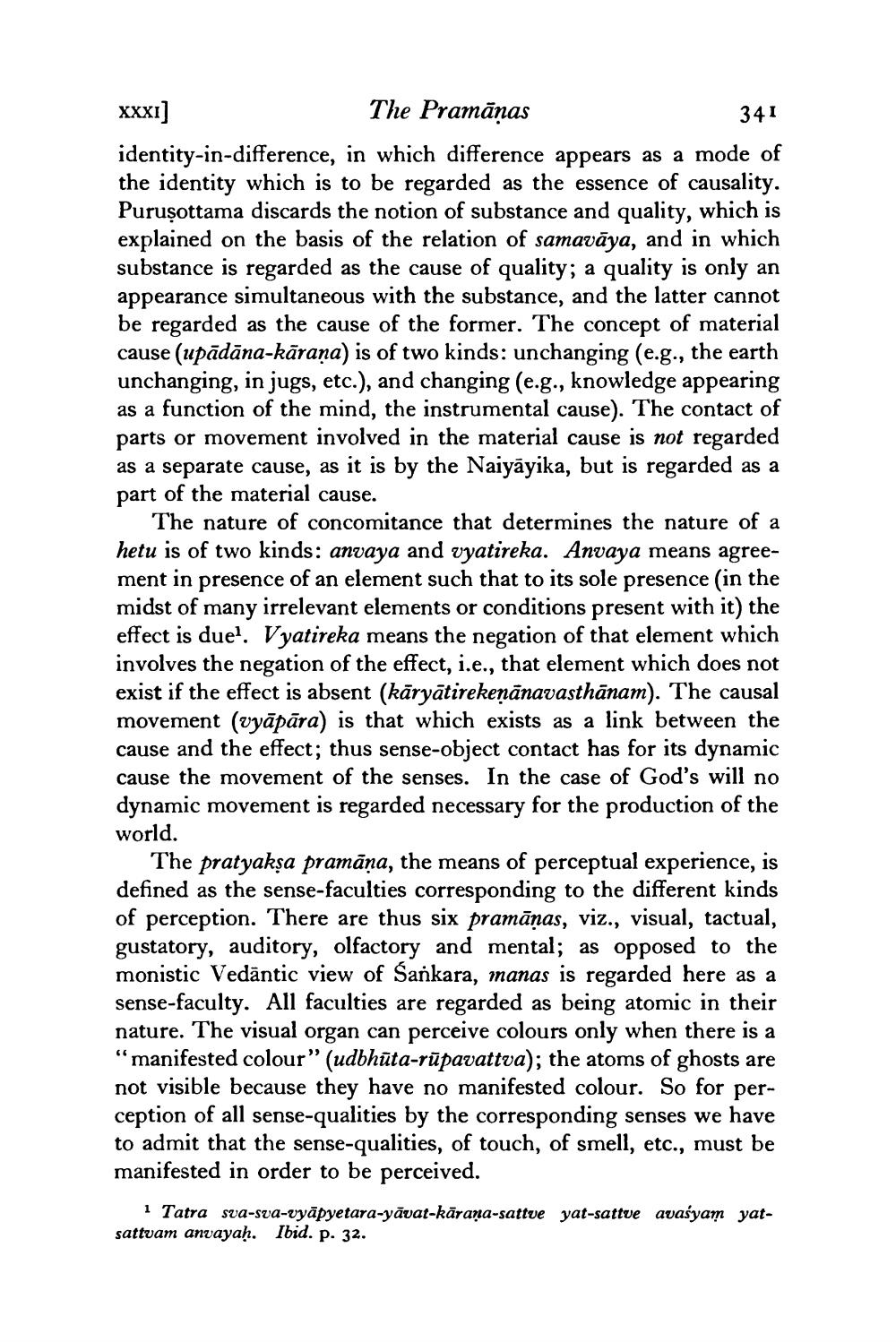________________
XXXI] The Pramānas
341 identity-in-difference, in which difference appears as a mode of the identity which is to be regarded as the essence of causality. Purusottama discards the notion of substance and quality, which is explained on the basis of the relation of samavāya, and in which substance is regarded as the cause of quality; a quality is only an appearance simultaneous with the substance, and the latter cannot be regarded as the cause of the former. The concept of material cause (upādāna-kāraṇa) is of two kinds: unchanging (e.g., the earth unchanging, in jugs, etc.), and changing (e.g., knowledge appearing as a function of the mind, the instrumental cause). The contact of parts or movement involved in the material cause is not regarded as a separate cause, as it is by the Naiyāyika, but is regarded as a part of the material cause.
The nature of concomitance that determines the nature of a hetu is of two kinds: anvaya and vyatireka. Anvaya means agreement in presence of an element such that to its sole presence in the midst of many irrelevant elements or conditions present with it) the effect is duel. Vyatireka means the negation of that element which involves the negation of the effect, i.e., that element which does not exist if the effect is absent (kāryātirekenānavasthānam). The causal movement (vyāpāra) is that which exists as a link between the cause and the effect; thus sense-object contact has for its dynamic cause the movement of the senses. In the case of God's will no dynamic movement is regarded necessary for the production of the world.
The pratyakșa pramāna, the means of perceptual experience, is defined as the sense-faculties corresponding to the different kinds of perception. There are thus six pramānas, viz., visual, tactual, gustatory, auditory, olfactory and mental; as opposed to the monistic Vedāntic view of Sankara, manas is regarded here as a sense-faculty. All faculties are regarded as being atomic in their nature. The visual organ can perceive colours only when there is a "manifested colour" (udbhūta-rūpavattva); the atoms of ghosts are not visible because they have no manifested colour. So for perception of all sense-qualities by the corresponding senses we have to admit that the sense-qualities, of touch, of smell, etc., must be manifested in order to be perceived.
yat
1 Tatra sva-sva-vyāpyetara-yāvat-kārana-sattue yat-sattue avasyam sattvam anvayaḥ. Ibid. p. 32.




